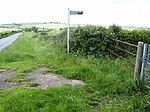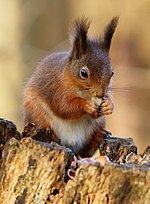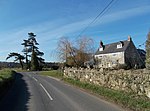Eaglehead and Bloodstone Copses

Eaglehead and Bloodstone Copses is a 10.3-hectare (25-acre) Site of Special Scientific Interest which is south of Ashey on the Isle of Wight. The site was notified in 1987 for its biological value. This area of woodland follows a stream at the foot of Ashey Down and is owned by the Hampshire and Isle of Wight Wildlife Trust, who manage it to encourage red squirrels and other local wildlife. The stream is said to contain stones stained red by the blood of a battle between "Saxons and Danes", although this is said to be due to red algae, although it is difficult to actually find any. The position is quite a likely one for such a battle as the valley through which the stream flows forms a defensive barrier against any force attempting to attack Carisbrooke from a landing in Bembridge Harbour. It could equally be the site of the battle between Saxons and Jutes in 686 CE where King Arwald was killed by King Caedwalla. In 1995 a Cruciform Brooch was brought to I.O.W Archaeological Centre. It was found at Bloodstone Copse. It had come from an Early Anglo-Saxon cemetery, or possible a secondary burial of an Anglo Saxon, at a Bronze Age cemetery which was located upslope of the find location.
Excerpt from the Wikipedia article Eaglehead and Bloodstone Copses (License: CC BY-SA 3.0, Authors, Images).Eaglehead and Bloodstone Copses
Brading Down Road,
Geographical coordinates (GPS) Address External links Nearby Places Show on map
Geographical coordinates (GPS)
| Latitude | Longitude |
|---|---|
| N 50.686 ° | E -1.177 ° |
Address
Eaglehead & Bloodstone Copses Nature Reserve
Brading Down Road
PO36 0ER
England, United Kingdom
Open on Google Maps










